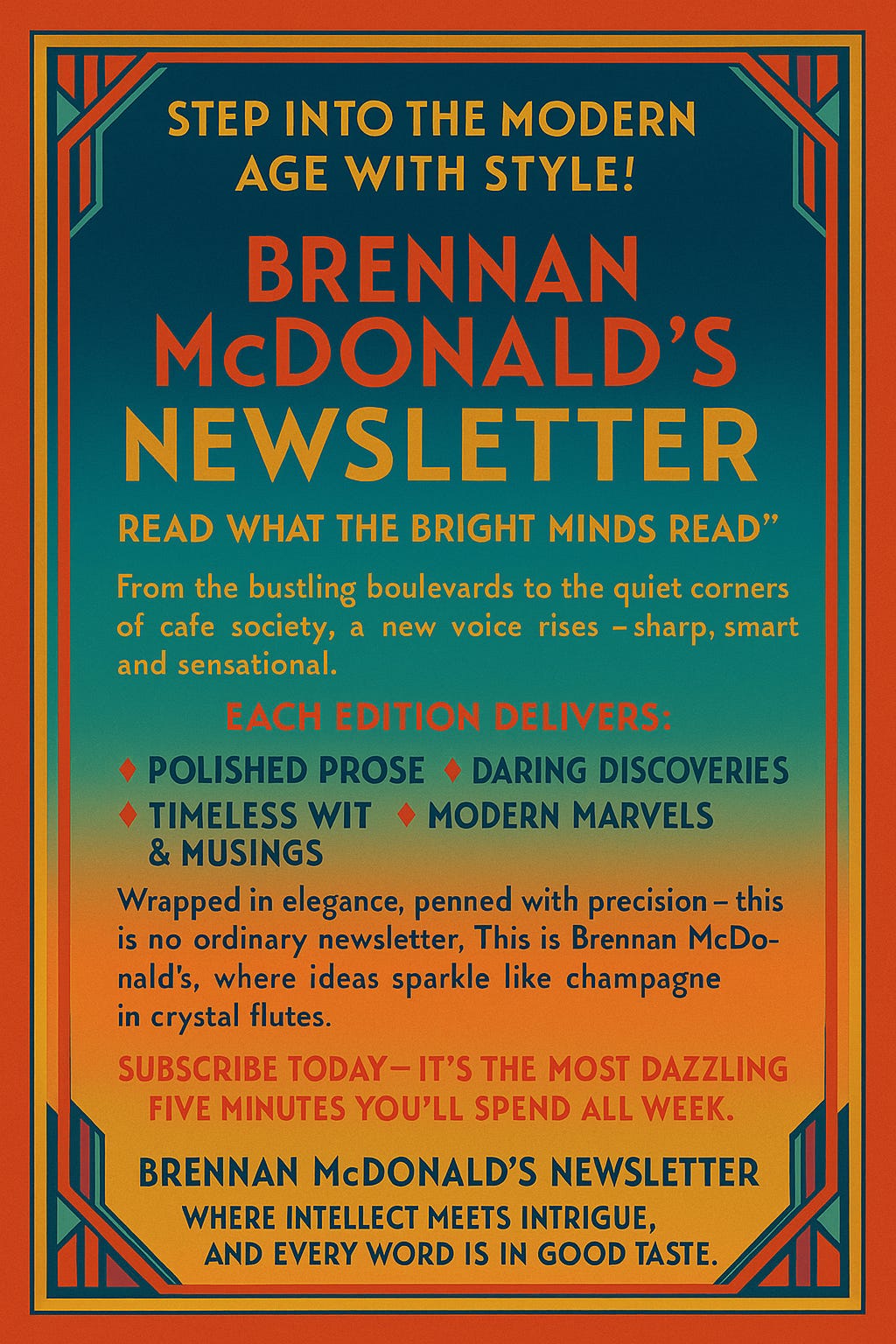Hi there,
I hope by now you’re having fun with AI too. I didn’t intend to write so much about AI as I have, but this newsletter is all about sharing what I’m up to with you and AI is truly dominating most of my spare bandwidth at the moment!
This week I’m going to write about the Studio Ghibli moment in image generation, what this means for workflows, and why this time could be different when it comes to net job losses.
Part 1: How Studio Ghibli Remixing Won The Internet
This week I did what everyone else on the internet did and turned some historical photographs into Studio Ghibli versions using Open AI’s next 4o image generation model.
How did one use case of an image generation tool capture the world’s imagination so quickly? I think partly it’s because of how Japan has chosen to regulate AI training data - they’re much more permissive than other countries.
For artists and creators - this sort of thing is traumatic. Art that took years to learn how to create is reduced to text based adjustment and filtering by millions of people.
I think this is too restrictive a view of what creativity means though. In the end, everything is a remix.
It seems that OpenAI have dialled back the creative restrictions on previous implementations of image generation models such as DALL-E. This model is built into the 4o model so it is leveraging all of the capabilities that have evolved in it instead of calling a separate model for image generation.
This has unleashed a wave of internet creativity. We can’t just reduce the moment to “everyone decided to make everything Studio Ghibli-style for a few days”, I think it’s much more significant.
Even though image generation models with similar capabilities have been available on Hugging Face for some time, this week has shown that in spite of all of the new open source models, ChatGPT is still the dominant global tool and has best-executed the “product side” for non-technical users to write things and get the output they envision.
The real insight is that what people want is to type something and get back the exact sort of thing they envisaged.
The next step in this is further removal of guardrails as open source models evolve - a scenario that is getting closer and closer with each new model release.
Part 2: What Moments Like This Mean For Workflows
I think workflows are a good way of thinking about how AI will be used. If you want to create a series of ads for testing on Meta, you might previously have hired a Meta ads agency.
The solo “organic scented candle” seller can now use AI to generate these ads, run analytics on ad performance, learn optimisation tips for improving click-through and upsell performance, and rapidly increase the pace of ship-learn-adapt or however you want to understand the feedback loop of trial-and-error that is a critical part of the business world.
The way to think about AI as its capabilities grow is that it reduces the number of intermediaries between idea and execution. It’s either you and the machine, or you and the machine interacting with a supplier of some sorts.
Over time, maybe autonomous agents will come into the mix, but essentially the prompt window is the project kickoff space now. OpenAI’s Operator tool isn’t there yet beyond performing basic tasks, but this space will evolve.
The key insight here is that with each “popular culture moment” where some increase in public awareness of how AI tool’s capabilities has improved, more and more people will use the tools after having not bothered for months, and quickly realise things are performing much better than the last time they tried ChatGPT 3.5 or the locked-down CoPilot at their workplace.
Part 3: Why This Time Could Be Different For Workers
All of the above brings me to the logical implications of step-changes in AI capability and what it means for business and workers.
If more decision makers start to use the prompt window to think through problems, it’s going to become less and less likely they choose to hire external vendors or hire additional employees.
Already, some small firms at the frontier of using these tools have hiring caps - why would you hire additional people unless you absolutely have to? Founders are dumping every bit of context - sales data, contracts, product specs - into AI tools and chatting with them as if they have a new co-founder helping them improve performance.
I think what will slowly happen is that first basic tasks will get pushed to the prompt window, then more complex tasks will be stitched together, then whole functional areas will evolve to highly automated agent driven workflows.
There will be new jobs created - but at a much higher entry-level threshold for skill and capability. This will especially impact anyone who depends on written knowledge - doctors, lawyers, engineers, knowledge workers with niche expertise - those who think they’re most protected will be the worst affected.
A good example is developers and vibe coding - the best software developers will operate at levels of productivity beyond those previously possible, managing platforms at scale with 1% of the FTE required just a few years previously.
One of the reasons why I am writing so much under my own name on this Substack, publishing a niche newsletter writing global custody news and insights at Global Custody Pro, and experimenting relentlessly with whatever AI tool I can find, is that I think you need to start writing for the AIs under your personal name so that you can even be found on the internet by the “AI summary tools” and have some semblance of personal name recognition in a niche you have deep experience in ahead of the next few years of rapid model improvement.
The risk isn’t AI safety doom-mongers tricking a paperclip manufacturing optimisation problem into taking over the world. The risk over the next few years is that basically no one understands what geometric growth curves look like and just isn’t adapting every single workflow task they do at a fast enough pace to enable sustained value creation about cost.
The glacial speed of enterprise adoption of this technology outside of startups and leaders in AI wrapper tool development (how long will that last?) is great news if you work for one of those firms. But the challengers will have no scruples in copying your entire business model stack and rapidly iterating and shipping new features while the AI risk governance policy is still being signed off.
This means that I think net job losses will be “a shock” and “surprising” as challengers take out entire categories of product from incumbents, leaving them with operating models that are “stranded assets” because the cost of delivering those products into competitive marketplaces will prove completely uneconomic due to retained high labour costs and high technology vendor costs with embedded change costs that make transition away from the high-cost model extremely bureaucratic and expensive.
We’re entering into AI-enabled hyper-capitalism at warp speed. How many millions of artist hours would have been required to generate so many “Studio Ghibli style” pictures just a few months ago? It would have been impossible.
In other news this week, Google released Gemini 2.5 which was completely overshadowed by the release of 4o image generation, even though it is a strong performing model. I recommend trying it out - and making sure you try the new 4o image generation as well this weekend if you haven’t had time yet.
Please leave a comment or reply to this email if you have any feedback, I’m grateful for some of the email feedback I’ve received.
Best regards,
Brennan






